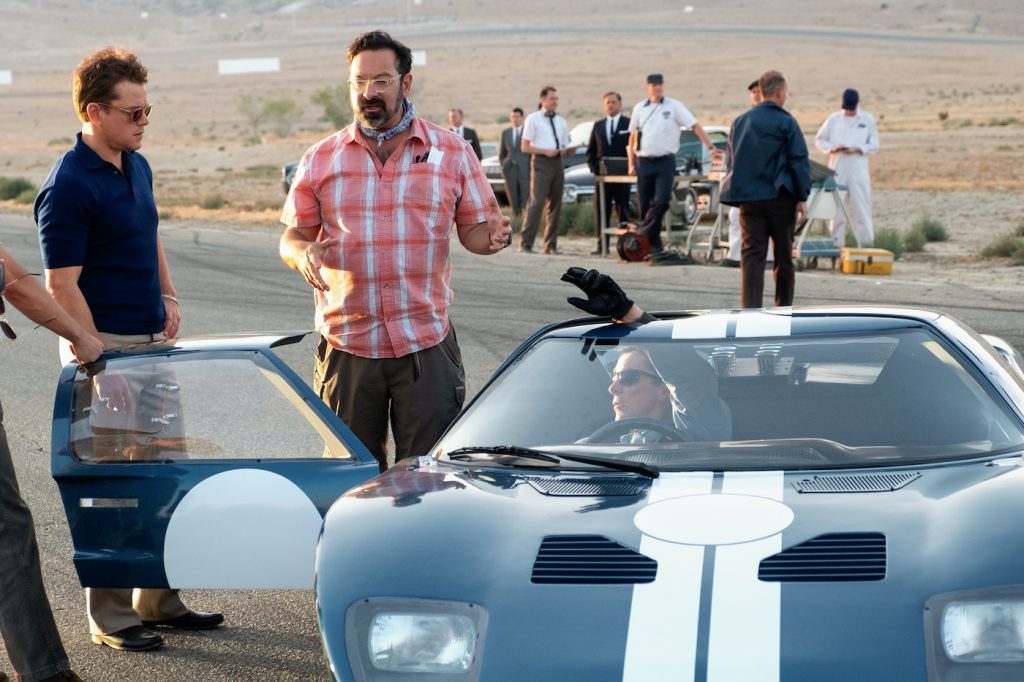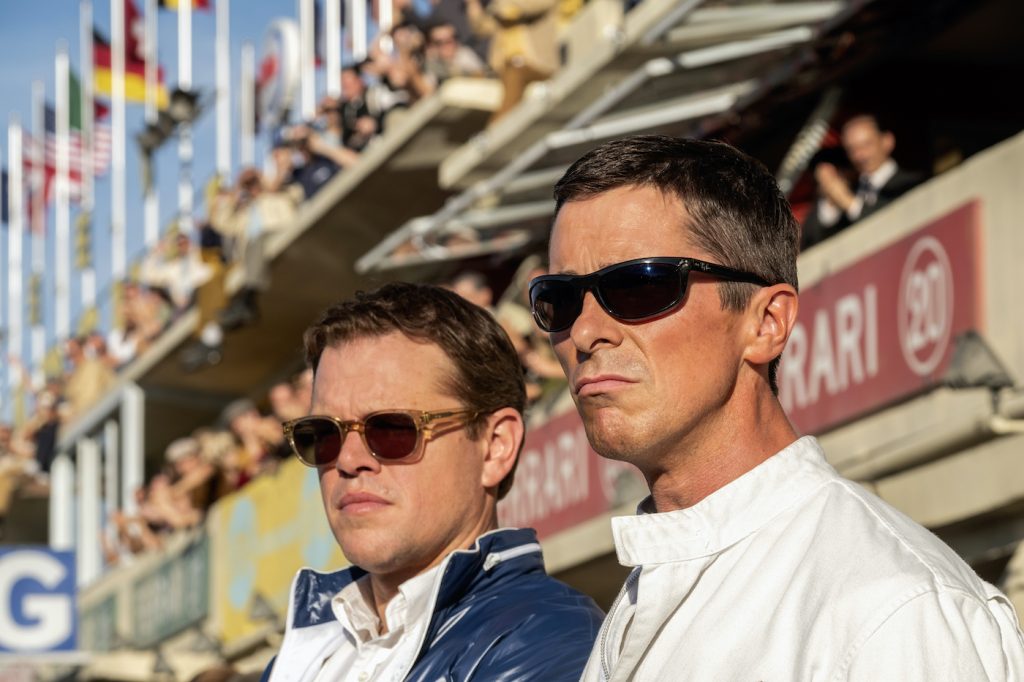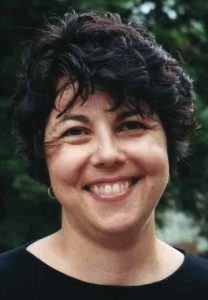Ford v Ferrari Cinematographer Phedon Papamichael on the Need for Real Speed
Cinematographer Phedon Papamichael grew up seeing the value of a great artistic collaboration. His father, also Phedon Papamichael, was an art director and production designer who worked on several landmark films by indie pioneer John Cassavetes including Faces (1968) and A Woman Under the Influence (1974).
The younger Papamichael, who was born in Athens, Greece and studied filmmaking in Germany, is best known for his work with directors Alexander Payne—Papamichael earned an Oscar nomination for Nebraska (2011)—and with James Mangold. He’s shot four Mangold films: Walk the Line (2005), 3:10 to Yuma (2007), Knight and Day (2010) and now Ford v Ferrari, the true story of Carroll Shelby (Matt Damon) and Ken Miles (Christian Bale) who partnered with the Ford Motor Co. at the behest of Henry Ford II (Tracy Letts) to design a race car that could be beat Italian sports car designer Enzo Ferrari (Remo Girone) at the 24 Hours of Le Mans in France in 1966.
“Jim and I very much in sync; we are lucky to be working together because we share a similar sensibility about what should be in the frame. He is a still photographer and I came from stills; his father was a painter, my father was a painter,” says Papamichael. “It’s funny because often [while shooting FvF] I’m communicating to my camera operators through this little device and in the meantime, I hear him saying the same thing. We’re speaking the same language.”
“We consider ourselves old school, traditional filmmakers,” he continues. “Mangold and I are of the same generation, we draw from the same inspiration, we grew up liking same films.” Papamichael cites Grand Prix (1966) as an important influence. “The power of these simple lock-offs on James Garner that are held and the not-so-quick paced cuts—it allows the audience to get a sense of what it’s like to be in this insane little machine.”
As production designer François Audouy had explained to us, the cars really are going well over 100 miles per hour in the film.
“In early testing, we discovered ways to hard mount these cameras to get the closeups—the [cars] are actually moving; they are not blue screen,” Papamichael says. “We have very little CGI work in this film because of the interactive light, the vibrations, the force that the actors feel, this you can’t fake. So we’d just take them around the track in these pod cars. Christian had some training as a race car driver for this and he actually races motorcycles. He’s quite a good driver but once you’re out on the track and we’re whipping him around, you feel the car in motion. When Shelby takes Ford for a test spin, I don’t think Tracy Letts expected that velocity. His reaction—you can’t do that on stage with a bunch of grips shaking the car.”
“It was important for us to get a sense of what it is like so you have to be very close to these cars with wide lenses,” Papamichael says. “You have to be low while moving. It was similar to Walk the Line [in that] we rarely took the perspective of the audience; it was all about what it’s like to be onstage. We never knew where Joaquin [Phoenix] was going to go, you just had to be there and be ready to capture these moments, these little gems. It’s not about designing; you can’t design that stuff.”

In the end, what draws Papamichael to films in so many different genres is the human story. “You can have the most elaborate action sequence but if you’re not connecting to the characters, it’s meaningless. That’s one of Mangold’s strengths. This film has strong characters and a great friendship at the center along with great race footage.”

But this kind of movie, with a big budget that’s not aimed at teenagers, “is a dinosaur,” said Papamichael. “It would be nice if it finds an audience so studio can say, well, maybe we can still make these movies. But it is a challenge. The mid-sector movies that I grew up working on, those 30-to-40-million-dollar movies, are very rare.”
Papamichael grew up in Europe, so his film references are vast and deep. “I watched John Ford westerns when I was young, then when I started watching cinema more consciously, it was French New Wave; German New Wave [such as] Herzog and Wenders; Italian net-realism [such as] De Sica; comedies, which I share with Alexander Payne, we love that; Japanese, Ozu, Kurosawa, which I share with Mangold.”
Papamichael has worked with film students to try and broaden their scope of reference.
“I travel and give master classes and film students today are not aware of these references. Some have never even seen a Truffaut film. It’s surprising but there’s limited access to [old films],” he says. “I moved from Munich to Los Angeles in 1984 and cinemas such as the New Beverly had double features of Pasolini or eight hours of Tarkovsky. That was my film school. Now I have 11-year-old kids and I try to make them watch films that affected me [like] Dr. Strangelove and The Man Who Would Be King. It’s different storytelling, different pacing, but they loved it.”
Ford v Ferrari hits theaters today, November 15.
For more on Ford v Ferrari, check out our interview with stunt coordinator Dan Nagle, and production designer François Audouy.
Featured image: Christian Bale in Twentieth Century Fox’s FORD V. FERRARI. Photo Credit: Merrick Morton TM and © 2019 Twentieth Century Fox Film Corporation



